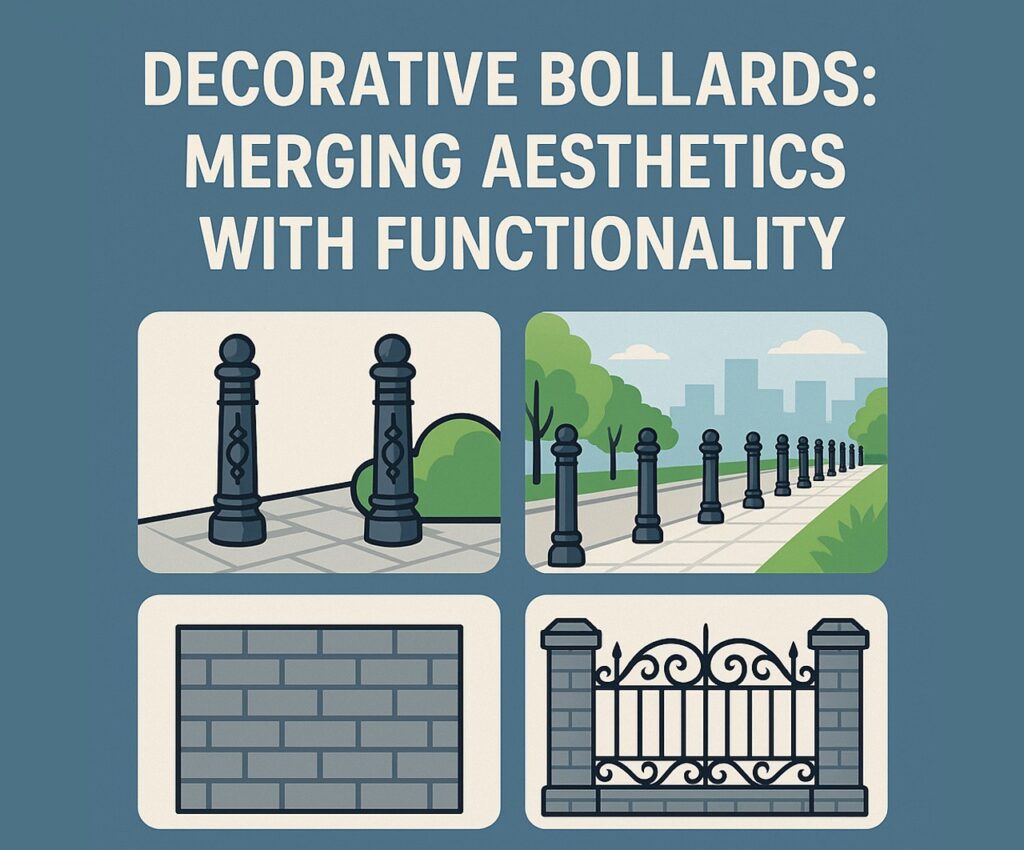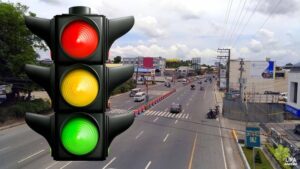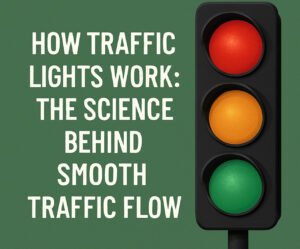When it comes to enhancing both safety and style in public spaces, decorative bollards like metal bollards, yellow bollards, and configurations such as 6 bollards in a row are doing more than just protecting perimeters—they’re shaping cityscapes. More municipalities, architects, and urban planners are realizing that functional design elements like decorative bollards can do double duty. They keep pedestrians safe and vehicles in check, but they can also elevate the visual identity of a space. If you’ve ever walked past a sleek row of metal bollards or a line of yellow bollards drawing the eye to a storefront, you’ve already seen how effective this blend of form and function can be. Know more..
The Dual Purpose of Bollards
Traditionally, bollards were simple posts meant to block vehicles or protect pedestrians. But over time, especially in high-traffic urban centers, these understated security tools evolved. Today, they’re key features in landscape architecture, event planning, traffic control, and even brand storytelling.
Take a set of 6 bollards flanking an entryway—this isn’t just for safety. It creates symmetry, frames the view, and adds subtle authority to the space. And with color variations like yellow bollards, there’s visual contrast and attention-grabbing design, particularly useful in industrial areas or zones with high vehicle movement.
What Makes Bollards Decorative?
Decorative bollards are designed to do more than just stand guard. They’re about visual cohesion, enhancing walkability, and supporting the surrounding environment. Common decorative features include:
- Textured finishes or powder coating
- Unique shapes like fluted columns or tapered domes
- Custom engravings or city seals
- Color options beyond the industrial gray or utility yellow
Even metal bollards, long associated with cold, functional design, are now produced with brushed finishes, black powder coats, or bronze tones to complement modern architecture.
Yellow Bollards: Safety Meets Visibility
Yellow bollards are popular because they instantly signal caution and attention. Often used in parking lots, warehouse loading zones, and around storefronts, their bright color enhances visibility. But that doesn’t mean they can’t also be decorative.
With the right materials and finishes, yellow bollards can fit seamlessly into a retail landscape or hospitality venue without feeling out of place. Some installations even use yellow as an accent color, matching other elements like signage or awnings.
Where Are Decorative Bollards Used?
The short answer? Everywhere. From urban parks to suburban sidewalks, you’ll see 6 bollards lining pathways, guiding pedestrians or cordoning off restricted areas. Here are some of the most common applications:
- City streets: To separate bike lanes from traffic
- Storefronts: For crash protection and curb appeal
- Parking lots: Especially with yellow bollards marking entry and exit points
- Campus walkways: For controlling foot traffic and enhancing design
- Event spaces: For crowd control without looking overly institutional
Material Choices: Why Metal Still Leads
Among the variety of materials available—concrete, plastic, wood—metal bollards remain the top choice for durability, strength, and design versatility. Aluminum, stainless steel, and ductile iron are common, with optional finishes that make them look less industrial and more intentional.
Benefits of metal bollards:
- High impact resistance
- Longevity in all weather conditions
- Compatible with decorative caps, rings, and sleeves
- Easy to clean and maintain
Modern metal bollards can also be paired with LED lighting or solar-powered accessories for nighttime visibility, further merging functionality with design.
Creative Bollard Arrangements
A single bollard can be functional. A set of 6 bollards can become a design statement. Spacing, alignment, and positioning can turn a simple safety measure into a pattern that enhances an area’s aesthetics.
Creative options include:
- Staggered placement for a more natural flow
- Arched or circular layouts around focal points like fountains or sculptures
- Alternating finishes (e.g., matte and gloss) for visual rhythm
You don’t have to sacrifice performance to gain aesthetic value—just be intentional with placement and material selection.
Removable and Retractable Bollards
Functionality often requires flexibility. Many metal bollards today are made to be removable or retractable, allowing access when needed without compromising permanent design integrity. These are especially useful for:
- Emergency access routes
- Event venue entry points
- Temporary pedestrian zones
Some systems allow a full set of 6 bollards to be removed within minutes, giving cities the adaptability they need in multipurpose spaces.
Branding Through Bollards
Want to make your space memorable? Custom bollards can reinforce your brand. Add your company logo, choose corporate colors (yes, including yellow bollards), or commission unique designs that reflect the area’s cultural identity.
This is particularly effective in:
- University campuses
- Corporate headquarters
- Museums and cultural districts
In these cases, metal bollards serve as low-key signage as much as they serve as protection.
Eco-Friendly Innovations
Today’s decorative bollards are also leaning green. Recycled materials, low-VOC paints, and solar-powered lighting elements are becoming more common. In pedestrian-first developments, architects often use sets of 6 bollards to replace traditional curbs, guiding foot traffic without building large physical barriers.
Maintenance Tips
Even the most stylish metal bollards or vibrant yellow bollards won’t help if they’re rusted, dented, or dirty. Keep your installation looking sharp with:
- Regular power washing
- Anti-graffiti coatings
- Prompt repair or replacement of damaged units
- Paint touch-ups or sleeve replacements
With proper care, your 6 bollards can remain functional and attractive for years.
Buying Tips: What to Look For
If you’re in the market for metal bollards, yellow bollards, or planning to install 6 bollards in a strategic layout, here are some key things to keep in mind:
- Purpose first: Know what kind of impact resistance or visibility is needed.
- Check compliance: Some cities have strict regulations on design and material.
- Think long-term: Choose materials and finishes that resist weather and wear.
- Aesthetics matter: Match colors and shapes to the surrounding environment.
- Supplier reputation: Work with vendors who specialize in both function and form.
Final Thoughts
In a world where public spaces are under constant scrutiny for safety, accessibility, and beauty, metal bollards, yellow bollards, and creative installations like 6 bollards in formation are becoming indispensable tools. They represent a smart balance between urban protection and architectural intention.
So whether you’re retrofitting a busy downtown area or designing a modern shopping center from scratch, don’t overlook the design power of a simple bollard. It might just be the final touch that brings the entire space together—while keeping it safe for everyone.





